Topics
Category
Era
Church of St. Columba, St. Paul
The Church of St. Columba in St. Paul’s Hamline-Midway neighborhood is the only Minnesota work by the Chicago architect Francis Barry Byrne. Architectural historian and critic Larry Millett calls it “a high point of modern church architecture in the Twin Cities.”
The Hamline-Midway neighborhood is a modest one of mostly single-story houses built in the early twentieth century. But just off the corner of Hamline and Lafond Avenues rises something unique and out of character: a bright combination of massive blocks and graceful curves. A Roman Catholic Church with no steeple, built in the style called Modernist, it is unlike any other building in the Twin Cities.
Archbishop John Ireland created St. Columba parish in 1914. For founding pastor he chose Michael J. Casey, whom he had met in Kilkenny, Ireland. Casey graduated from the St. Paul Seminary in 1906 and was serving a tiny parish in Big Stone County when Ireland called on him to come back to St. Paul.
The Midway congregation first met in a storefront at the corner of Hamline Avenue and Thomas Avenue. Its first permanent church went up in 1915; it featured squat twin towers in a supposed “Norman-Gothic” style. The congregation grew quickly. It opened a school on Hamline Avenue, next to the church, in 1922, and expanded it to a capacity of 1000 students in 1931.
In 1945 Father Casey decided a new, bigger parish church was needed, and challenged his congregation to raise the money. When, rather soon, $300,000 had been gathered, the Chicago church architect Francis Barry Byrne (1883–1967) was hired. St. Columba sources say Casey chose Byrne, whom he had known for fifteen years; Byrne’s biographer says it was St. Paul’s archbishop, John Gregory Murray, who insisted on Byrne.
Byrne was an uncommon figure. He never finished high school but talked his way into a clerical role on Frank Lloyd Wright’s architectural team at age eighteen. There he served as chief draftsman and construction supervisor of the famed Unity Temple in Oak Park. At age twenty-four he went into business for himself, and after years of wandering and struggle settled on church architecture as his specialty. He was devoutly Roman Catholic.
As he developed his own style, Byrne insisted on an American architecture free of classical European influence. Though he disliked the term modernist, his designs fit some of its characteristics—“form over function” and little ornamentation. “The function of a church,” wrote Byrne, “is worship, and a church in the new style that adequately and soberly expresses this great function of worship cannot be other than an enduring piece of architecture.” He designed Catholic churches in Racine, Chicago, Milwaukee, Tulsa, Pierre, Kansas City, and, his favorite, in Cork, Ireland. Byrne also published more than forty magazine articles, and nearly a hundred columns and book reviews on architecture, painting, and painters.
St. Columba presented Byrne with two unusual challenges. One was a small footprint; the other was Father Casey’s insistence that the church feature an “Irish tower,” a feature associated with St. Columba himself. Against his own desires, Byrne added the tower and, to accommodate a building that would seat 1000, placed it on the lot on a diagonal.
Construction began in 1948. To save money, Byrne designed the church with no basement; concrete was poured over a steel frame. The exterior walls are curved, so that the interior space resembles one of Byrne’s favorite motifs, the ancient Christian symbol of the fish. From Lafond Avenue, on the building’s south side, the first thing that catches the eye is the tall Irish tower. Inside, the sanctuary is open—no pillars—and filled with light that, according to Millett, “even on sunny days is mysterious and ethereal.” The building opened in 1950. In an essay for St. Columba, Barry Byrne wrote that the modern church “should be built to endure, to last into another and later age.” His St. Columba in the Midway has so far done that.
The congregation, by contrast, has changed with the city. In 1950 it was, ethnically, mostly English, French, Irish, and German, with a seasoning of Eastern European and Italian surnames. In 2017 the majority of its congregation was Vietnamese American.
Bibliography
Church of St. Columba, St. Paul, Minnesota. New Church Dedication Book: A Retrospect of Thirty-Six Years, 1914–1950. St. Paul: Church of St. Columba, [1950].
——— . St. Columba Church. St. Paul: Church of St. Columba, 1967.
——— . Church of St. Columba, 1914–2014. [St. Paul]: 2014.
Michael, Vincent L. The Architecture of Barry Byrne. Urbana: University of Illinois Press, 2013.
Millett, Larry. AIA Guide to the Twin Cities. St. Paul: Minnesota Historical Society, 2007.
Related Resources
Secondary
Church of St. Columba. New Church Dedication Book: A Retrospect of Thirty-Six Years, 1914–1950. St. Paul: St. Columba Church, [1950].
Wingerd, Mary Lethert. Claiming the City: Politics, Faith, and the Power of Place in St. Paul. Ithaca, NY: Cornell University Press, 2001.
Related Images
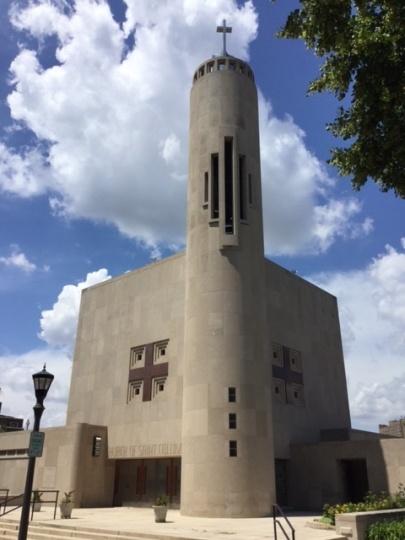
Church of St. Columba, St. Paul
All rights reserved
Holding Location
Articles
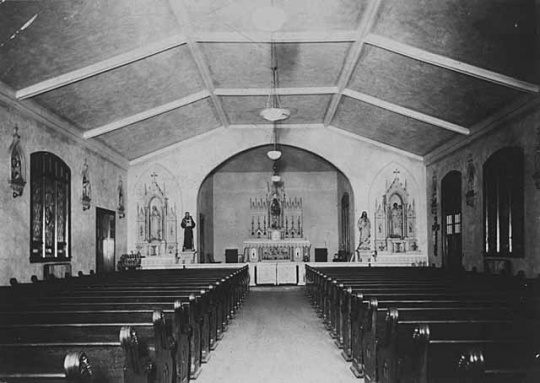
Interior of the original Church of St. Columba
Holding Location
Articles
More Information
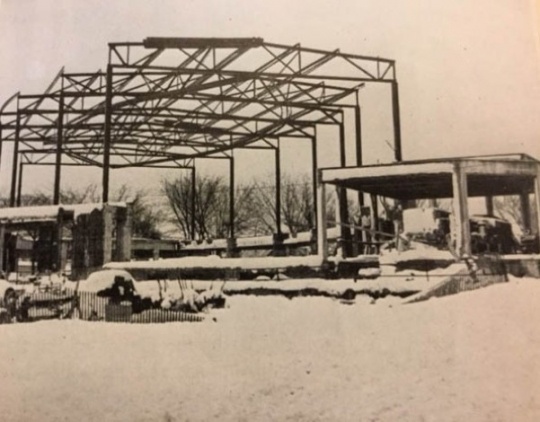
Church of St. Columba under construction, 1949
Steel frame interior supports of the new Church of St. Columba (St. Paul) during its construction, 1949. From New Church Dedication Book: A Retrospect of Thirty-Six Years, 1914–1950 (St. Paul: Church of St. Columba, [1950]), page 6.
Articles
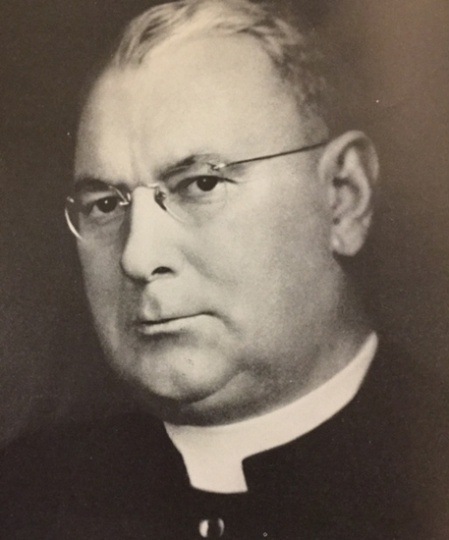
Rev. Michael J. Casey
Rev. Michael J. Casey, date unknown. From New Church Dedication Book: A Retrospect of Thirty-Six Years, 1914–1950 (St. Paul: Church of St. Columba, [1950]), page 6.
Articles
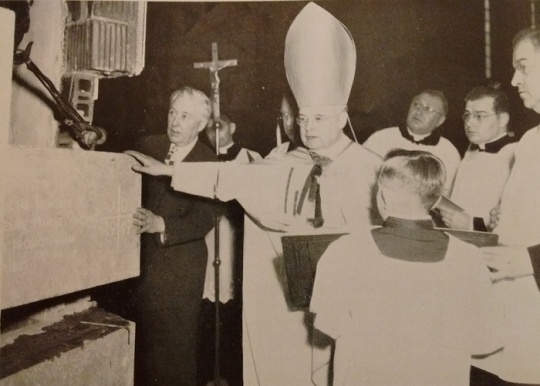
Archbishop John Gregory Murray
John Gregory Murray (center), Archbishop of St. Paul, at the cornerstone dedication of the Church of St. Columba (St. Paul), February 1949. From New Church Dedication Book: A Retrospect of Thirty-Six Years, 1914–1950 (St. Paul: Church of St. Columba, [1950]), page 24.
Articles
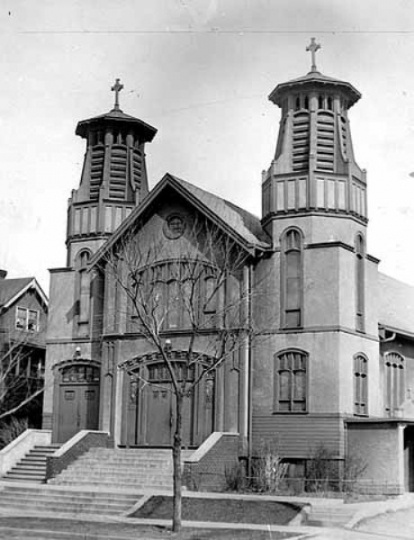
Exterior of the original Church of St. Columba
Holding Location
Articles
More Information
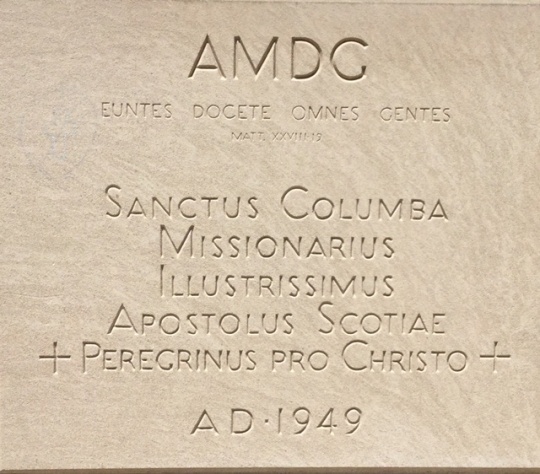
Cornerstone of the Church of St. Columba
All rights reserved
Holding Location
Articles
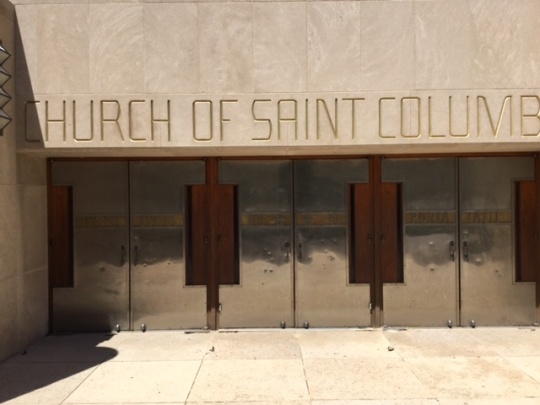
Front entrance to the Church of St. Columba
All rights reserved
Holding Location
Articles
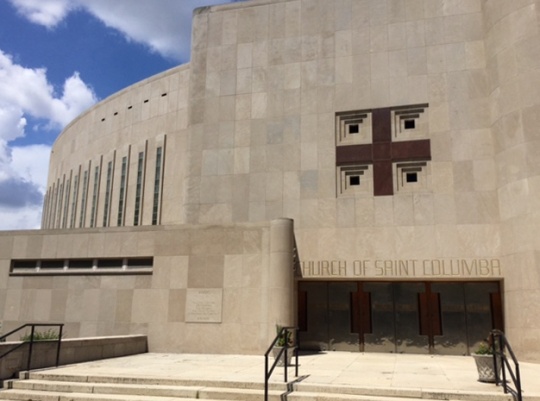
Curved western wall of the Church of St. Columba
All rights reserved
Holding Location
Articles
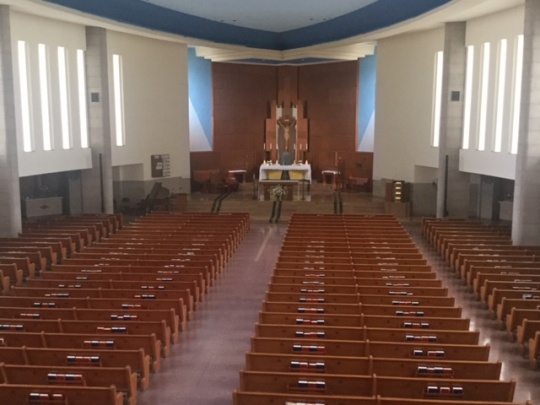
Interior of the Church of St. Columba
All rights reserved
Holding Location
Articles
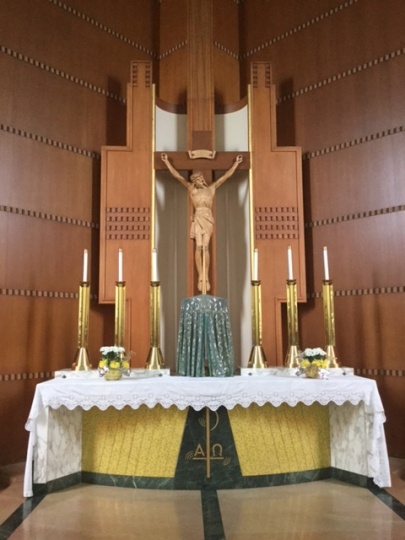
Altar inside the Church of St. Columba
All rights reserved
Holding Location
Articles
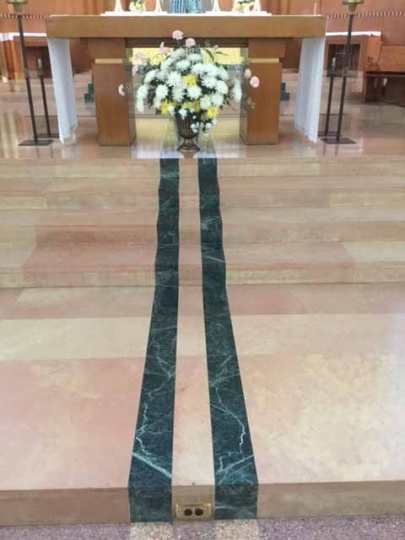
Marble floor inserts honoring Father Michael J. Casey
All rights reserved
Holding Location
Articles
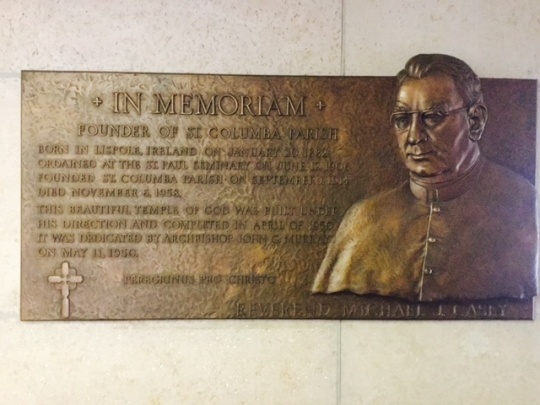
Plaque in memory of Father Michael J. Casey
All rights reserved
Holding Location
Articles
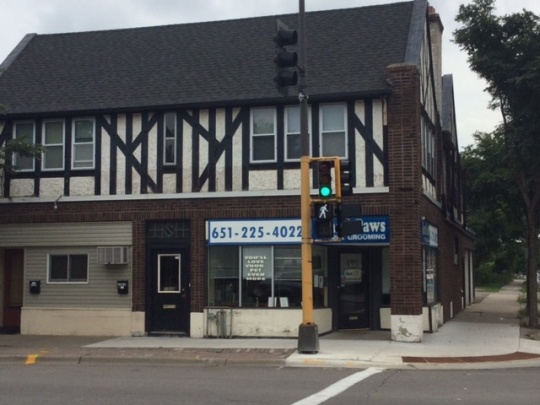
Site of the first meeting of the Church of St. Columba congregation (St. Paul
All rights reserved
Holding Location
Articles
Related Articles
Turning Point
In 1945 Father Michael J. Casey challenges his congregation to raise the money to build a new, much bigger church.
Chronology
1882
1906
1914
1915
1921
1931
1945
1948
1949
1950
2004
2007
Bibliography
Church of St. Columba, St. Paul, Minnesota. New Church Dedication Book: A Retrospect of Thirty-Six Years, 1914–1950. St. Paul: Church of St. Columba, [1950].
——— . St. Columba Church. St. Paul: Church of St. Columba, 1967.
——— . Church of St. Columba, 1914–2014. [St. Paul]: 2014.
Michael, Vincent L. The Architecture of Barry Byrne. Urbana: University of Illinois Press, 2013.
Millett, Larry. AIA Guide to the Twin Cities. St. Paul: Minnesota Historical Society, 2007.
Related Resources
Secondary
Church of St. Columba. New Church Dedication Book: A Retrospect of Thirty-Six Years, 1914–1950. St. Paul: St. Columba Church, [1950].
Wingerd, Mary Lethert. Claiming the City: Politics, Faith, and the Power of Place in St. Paul. Ithaca, NY: Cornell University Press, 2001.















